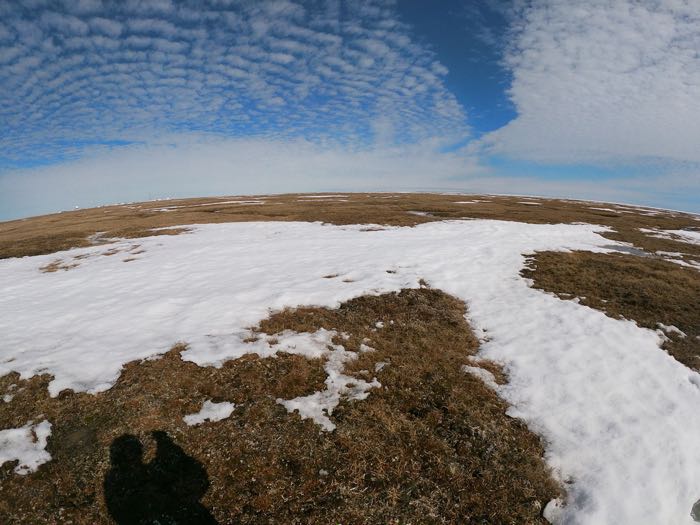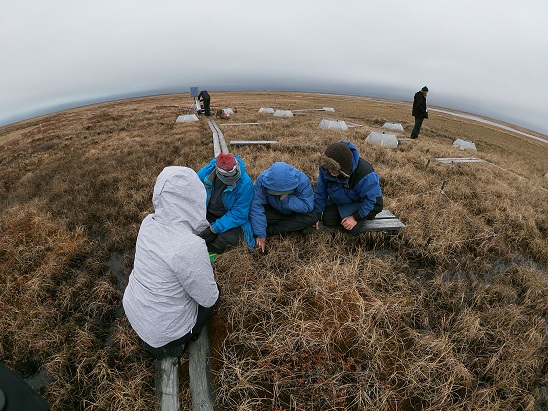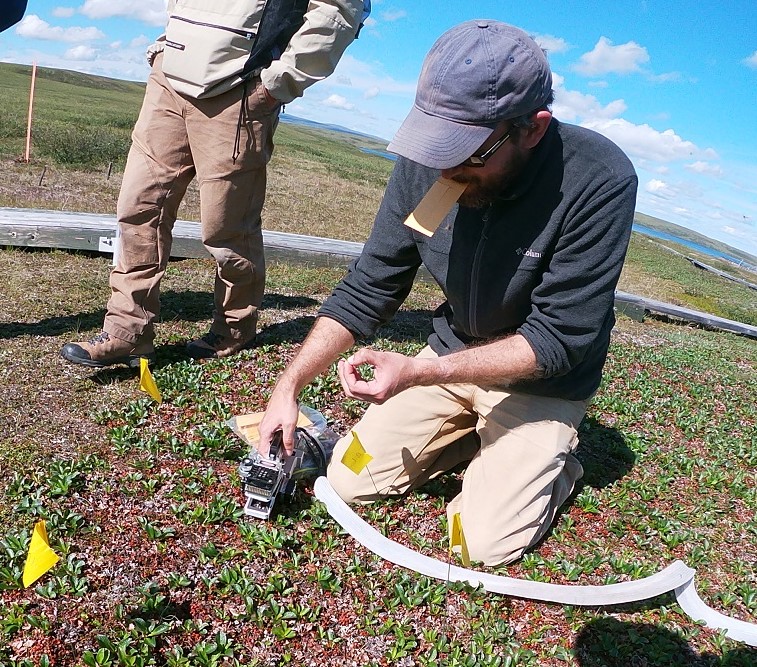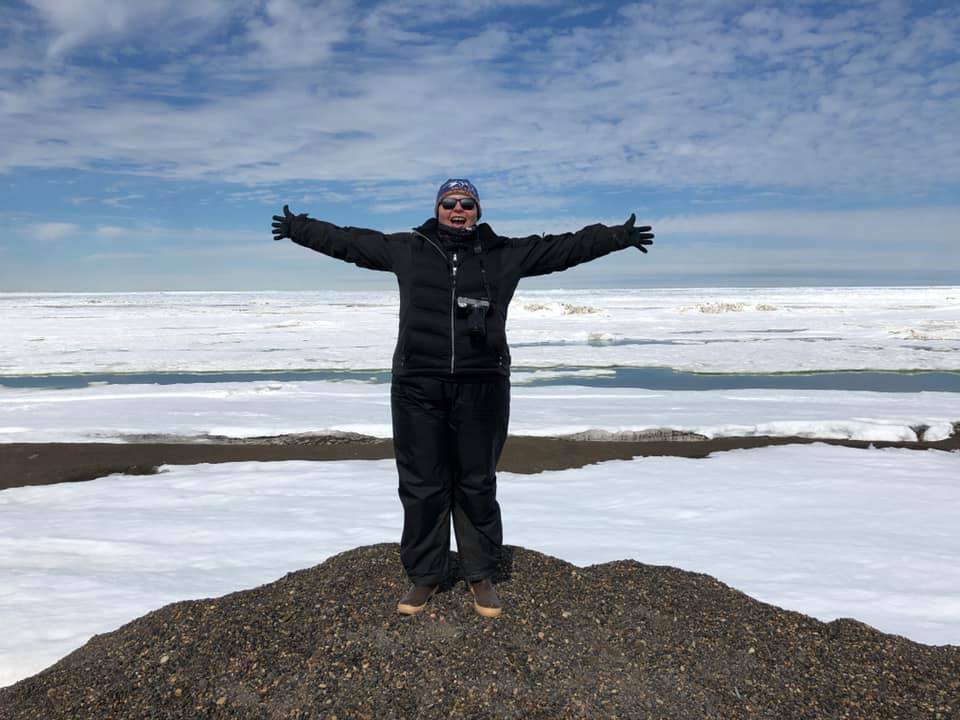The Canary In The Coal Mine
South Texas is pretty far removed from the Arctic. When I mention climate change in my classroom, my students think of emaciated polar bears roaming the Arctic Ocean for a few minutes and then carry on with their day. I needed to find a way to connect what was happening in the Arctic to my students’ everyday lives so they could understand the implications of climate change in ecosystems all over the world, including ours. After all, as Dr. Jeremy May says, the Arctic is the canary in the coal mine. It’s a look into our future.

The Science
I joined a team of scientists in Barrow, Alaska, and then later at Toolik Field Station where I learned about phenology or the "Science of When". Dr. Steve Oberbauer and Dr. Jeremy May of Florida International University belong to a group of researchers called the International Tundra Experiment Arctic Observing Network (ITEX AON) which study change in the Arctic. I was able to learn firsthand through my field experience that climate change is affecting the timing of everything in the tundra.
Dr. Oberbauer and Dr. May developed a tram system that records changes in the vegetation of the tundra throughout the summer over multiple years. Three Mobile Instrumented Sensor Platform, or MISP Trams, are set up in three locations across the North Slope of Alaska. The Tram is a set of instruments that collects data along a 50-meter transect of tundra. It measures things like temperature, greenness, and the height of the vegetation. There is so much data that no team of researchers could possibly process it completely, but it will be there for the future, so scientists can look back at what the tundra was like before.
Why is “When” so Important?
A changing climate affects organisms in different ways. All living organisms in an ecosystem depend on each other, but what if a plant blooms and produces its fruit earlier than ever? Before a species of bird that feeds on that fruit has a chance to hatch its eggs or even migrate to that area? What food source will it eat? If a species’ life cycle changes dramatically, it can have a major effect on the other organisms in that ecosystem. We are already seeing how climate change is affecting the tundra ecosystem. ITEX researchers are also looking into how a continued increase in average temperatures will affect vegetation. Open Top Chambers (OTCs) are like small greenhouses set over plots of vegetation. They increase the temperature about 1-2 degrees on average. Researchers like Bob Hollister and Hana Christopherson record the maturation of the plants growing in these chambers and compare them to control plots.

Bringing the Science Back
Dr. May and I collaborated on multiple lesson plans that I will be writing and integrating into my classroom this year. They range from analyzing plant and lichen samples that I collected in the field, to studying data the research team collected over the summer. These lessons and my experiences from the Arctic that I share with my students will help me teach about the effects of climate change on the tundra and South Texas. Dr. May will be visiting Eagle Pass, Texas and working with my students later this year. We hope to show them field techniques and take them out into our local ecosystem to learn about phenology. I will also be visiting other schools within my district and teaching them about polar research. Dr. May and I hope to include these other campuses in a community event when he visits.
Post-Expedition Opportunities
Prior to my expedition, I was fortunate enough to meet PolarTREC educator Melissa Lau, a 6th-grade science teacher from Oklahoma who had accompanied Dr. May and Dr. Oberbauer on an Arctic expedition the previous year. We hope to present our shared experience at the National Science Teachers Association conference in Boston, Massachusetts in the spring of 2020. I will also be at the Science Teachers Association of Texas Conference for the Advancement of Science Teaching this November where I will speak about my experience in the Arctic, encourage other formal and informal educators to apply to the PolarTREC program, and share lessons that I have developed. Dr. Oberbauer and Dr. May have applied for funding for an expedition to Toolik in the winter and they hope to take Melissa Lau and I along to help in the field and with outreach.
Making Science and Scientists Relatable
Most children have a stereotypical view of a scientist that could not be farther from the truth. I try to show my students that scientists are just like them: they are curious, inquisitive, and adventurous. Programs like PolarTREC bring scientists at the top of their field within reach of students like mine. By following along their teacher’s experience with a team of researchers, students witness the challenges and successes scientists face in the field. Teachers benefit from this experience by learning field techniques and increasing their content knowledge. They become inspired to write lessons and activities that bring current science and real climate change data into their classrooms. Researchers gain access to an entirely new audience when they take an educator out into the field. Together these teachers and researchers inspire the next generation of scientists.
My First Time in the Snow
I thought we had wide-open spaces in Texas, but nothing can compare to the beauty of the tundra. The wildlife and vegetation fascinated me, and I soaked up all the information I could. The researchers I had the privilege to work with were eager to share their immense knowledge and they were so patient when answering my questions. I not only learned about the complexities of the ecosystems, but I learned about the field methods they use to collect data and I witnessed the awe-inspiring problem solving and ingenuity that happens in remote locations when challenges present themselves. I hope to encourage this type of problem-solving within my students. After all, now is the time to do something about climate change. Thank you PolarTREC, you have changed this teacher forever.

*This program is supported by the National Science Foundation under award 1918637. Any opinions, findings, and conclusions or recommendations expressed by this program are those of the PIs and coordinating team, and do not necessarily reflect the views of the National Science Foundation.
| Attachment | Size |
|---|---|
| Download Report1.12 MB | 1.12 MB |
This program is supported by the National Science Foundation. Any opinions, findings, and conclusions or recommendations expressed by this program are those of the PIs and coordinating team, and do not necessarily reflect the views of the National Science Foundation.
